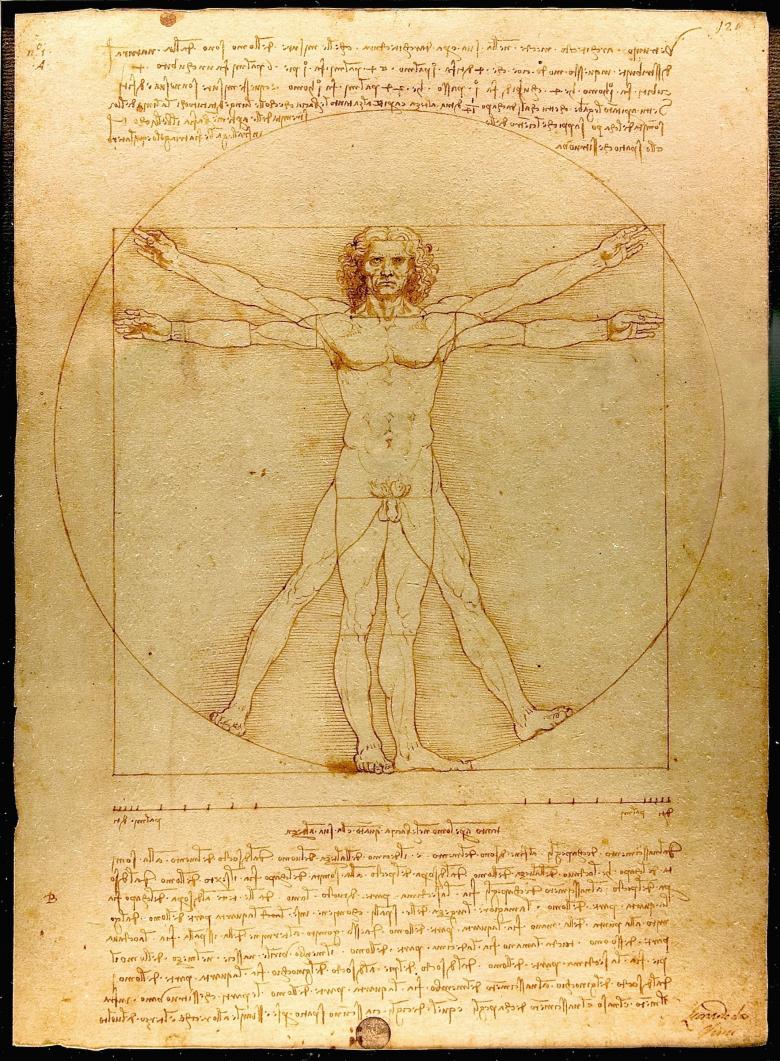Saving ‘Greenwood Pond: Double Site’ and Replicating ‘Vitruvian Man’
This Week in Lawsuits
John Hill
11. April 2024
Leonardo da Vinci, Vitruvian Man, ca. 1492 (Image via Wikipedia)
A US federal judge has halted the demolition of Greenwood Pond: Double Site, a 1996 work of environmental art in Des Moines, Iowa, by Mary Miss, and a German court has ruled that Ravensburger can continue to produce jigsaw puzzles bearing the iconic image of Leonardo da Vinci's Vitruvian Man.
‘Greenwood Pond: Double Site’Demolition of Greenwood Pond: Double Site, a site-specific artwork created by Mary Miss for the Des Moines Art Center (DMAC) between 1988 and 1996, was set to start this week, but US District Court for the Southern District of Iowa Judge Stephen Locher granted a temporary restraining order on Monday, following a lawsuit filed by the artist last week. Plans for the demolition of the nearly 30-year-old artwork were revealed in January, a few months after it was closed to the public while the DMAC conducted a structural review of the site. Following that review, the DMAC “regrettably” concluded that the artwork needed to be deinstalled, primarily for reasons of “structural integrity and public safety.”
The large-scale site-specific artwork consists of multi-level paths, a wood trellis, and other structures that engage with the prairie and wetland ecosystem in the larger Greenwood Park. The artwork is meant to be experiential and educational but also provide wildlife habitat and stormwater mitigation. Although the park is city-owned, the DMAC oversees the maintenance of the artwork that is part of its permanent collection. An open letter from DMAC director Kelly Baum dated February 3, 2024 — no doubt written in response to dozens of letters of support assembled by The Cultural Landscape Foundation — indicates a $1.5 million initial cost for the artwork and the allotment of around $1 million in the years since for its repair and maintenance.
In early 2023, well before the artwork was making headlines, the DMAC uploaded a 1999 film on the making of Greenwood Pond: Double Site to YouTube, pointing to the institution's pride in having the environmental artwork in its collection:
At the heart of the lawsuit is a 1994 contract between the DMAC and Mary Miss that indicates the former should “reasonably protect and maintain” the work; the artist's lawsuit contends the DMAC is in breach of the contract and is violating the Visual Arts Right Act of 1990, which grants artists rights to protect their artworks. Although the artist resolved to take legal action after hearing about DMAC's plans to deinstall the piece, she told the New York Times: “Getting involved with attorneys is the last possible solution, but I don’t think we had any other choice at this point.”
The judge halting the demolition plans wrote, per The Art Newspaper: “[The DMAC] has not offered sufficient evidence to show that it actually faces a meaningful risk of suffering costs or damages” if the demolition is delayed, and that the DMAC “has not closed off access to more than a small portion of the artwork despite the alleged public safety risk.”
‘Vitruvian Man’
Leonardo da Vinci’s iconic Vitruvian Man drawing, created around 1490, is one of the most recognizable images in the world — more so for architects, whose first-year lessons in architecture school covered proportion, harmony, and humanism. Da Vinci's drawing was hardly the only Renaissance representation of human proportions written about by Roman architect Marcus Vitruvius Pollio in the 1st century BC De architectura, but it is easily the most famous.
One year ago, da Vinci's drawing made headlines when an Italian court blocked German toy company Ravensburger from creating jigsaw puzzles featuring the iconic drawing, the original of which resides in the Gallerie dell’Accademia in Venice. The museum sued Ravensburger over its use of the image on a jigsaw puzzle as far back as 2009, citing Italy’s Cultural Heritage and Landscape Code, which gives public institutions in the the country the ability to earn fees from commercial replication of artworks, even ones, like Vitruvian Man, residing in the public domain. Ravensburger contended that the Code only applied to Italy, but a Venice court sided with the Accademia, ruling that Ravensburger would have to pay a fee of €1,500 ($1,626) for each day that the puzzle was manufactured since November 17, 2022. The puzzle was pulled from the company's website following the ruling.
Fast forward from the Venice court's ruling in March 2023 to a report this week in the New York Times: “A court in Germany sided [last month] with Ravensburger, ruling that the company did not have to pay up and that Italy’s cultural heritage code did not apply beyond its borders. The court said the Italian code broke with European law, which standardizes copyright protections for 70 years after the death of the artist. The Italian state does not have the regulatory power to apply it outside Italian territory. The opposite view violates the sovereignty of the individual states and must therefore be rejected.”
A spokesman for the Italian government called the ruling “abnormal” and said the government would challenge it before “every national, international and community court.”
